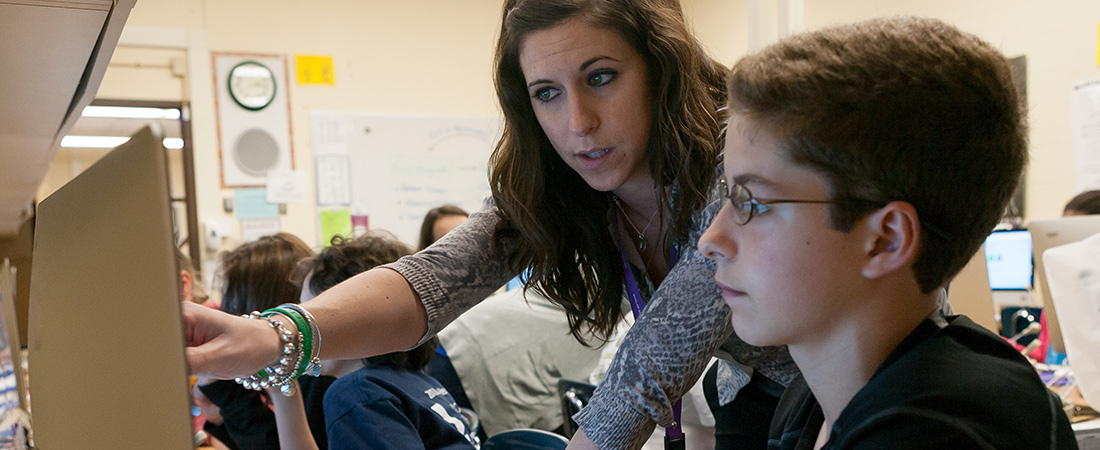New CS Curriculum Guide a Resource for Schools

As computer science comes online in Massachusetts schools, educators are increasingly looking for guidance about how best to teach this material. What computer science curricula exist? And which ones are any good?
Massachusetts teachers can now turn to the K–12 Computer Science Curriculum Guide for a comprehensive way to identify high-quality resources for their classrooms. The newly published guide was created by the Massachusetts Computing Attainment Network (MassCAN), a public-private initiative headquartered at EDC.
The guide examines 32 computer science resources—some are full-year curricula, others are standalone learning tools—for use in elementary, middle, and high school classrooms. In addition to describing each resource, it also offers information about the technology required to run the resource and whether professional development support is available.
“There are a lot of really effective, innovative computer science programs that we want teachers to know about,” says EDC’s Jim Stanton, executive director of MassCAN and co-editor of the guide. “We hope this guide will be used to accelerate the expansion of computer science opportunities for students across the Commonwealth.”
Since 2013, MassCAN has been at the forefront of efforts to expand access to computer science education. MassCAN played a key role in the creation of Massachusetts’ new digital literacy and computer science standards in 2016. And this past April, MassCAN led the development of a landmark report detailing the state of computer science education initiatives across the country.
The K-12 Computer Science Curriculum Guide further extends this work. Stanton credits a number of partners—including the Massachusetts Executive Office of Education, the Massachusetts Department of Elementary and Secondary Education, and the Greater Boston chapter of the Computer Science Teachers Association—for helping to develop the work.
“We are so grateful to all of the experts—from teachers to engineers to curriculum writers—who shared their wisdom and helped us assemble and curate this information,” Stanton says.
